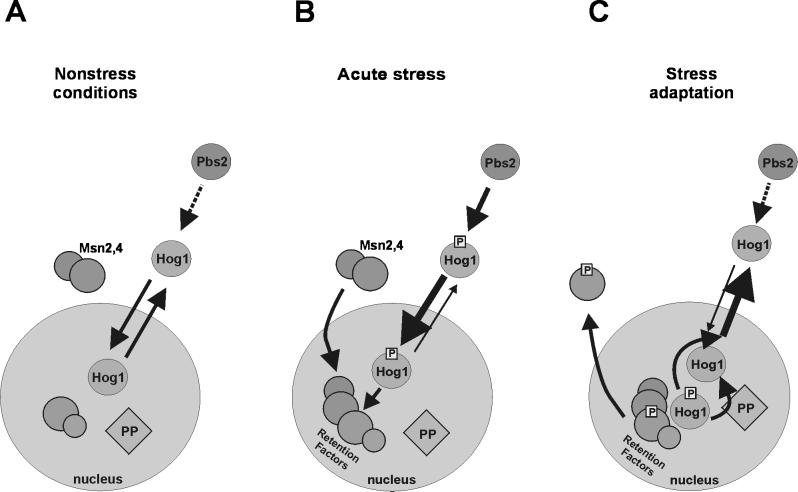Figure 9.
Model proposing how different regulatory mechanisms cooperate to determine Hog1 intracellular distribution. (A) Under favorable growth conditions Hog1 travels between cytoplasm and nucleus. This cycling is independent of activity and the presence of upstream components of the MAPK pathway. (B) During acute stress Hog1 rapidly accumulates in the nucleus. Hog1 phosphorylation by Pbs2 is essential for this process. Phosphorylated Hog1 is either more competent for nuclear import or less competent for nuclear export (as indicated by the thickness of the arrows). At the same time, some nuclear retention factors accumulate in the nuclear compartment. At this step, Hog1 kinase might modify stress response–specific targets. (C) Late phase of adaptation induces kinase activity-dependent nuclear export of Hog1. There are three potential mechanisms for which kinase activity is necessary. Hog1 might activate nuclear phosphatases; that might convert Hog1 into a more efficient export cargo. Alternatively, nuclear substrates phosphorylated by Hog1 might be exported, decreasing the concentration of nuclear retention factors. Finally, Hog1 might be required to enhance the activity of an export system. P, phosphate; PP, protein phosphatase.

